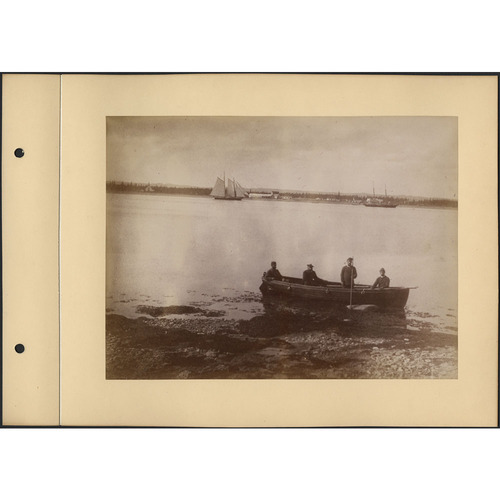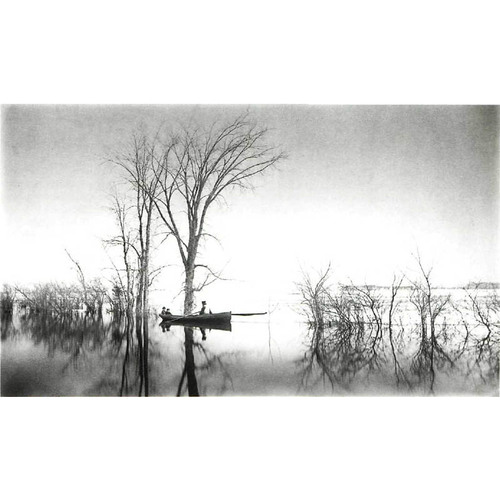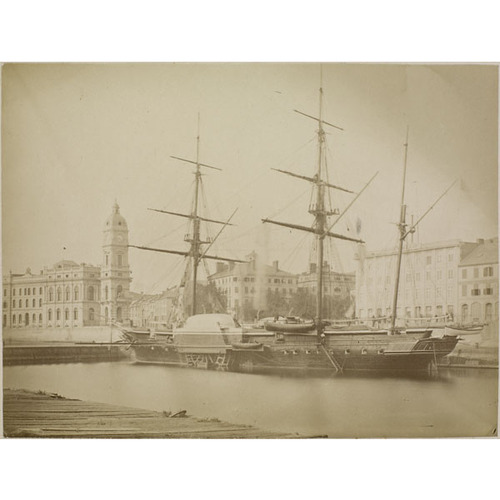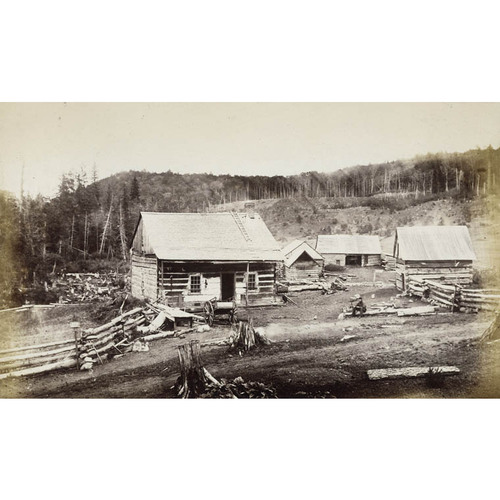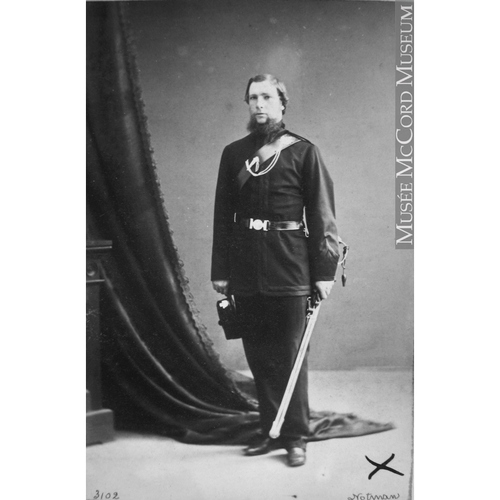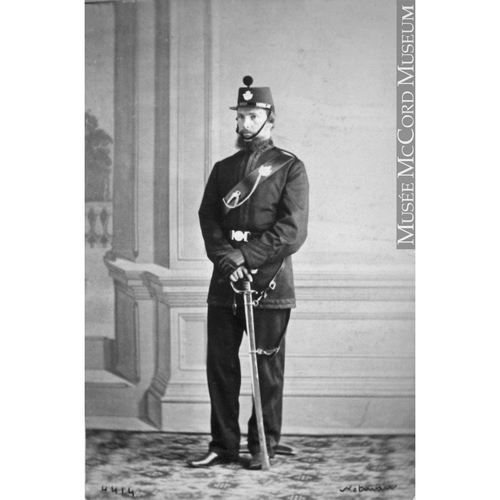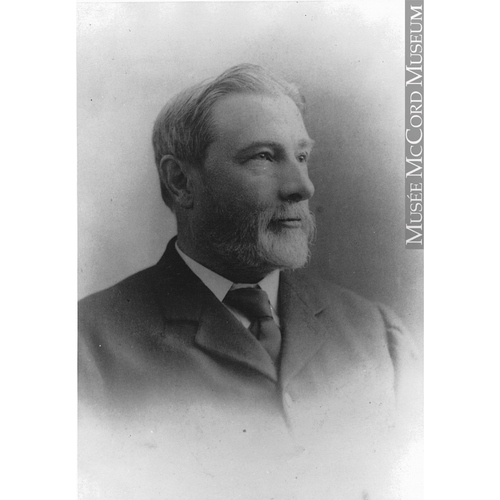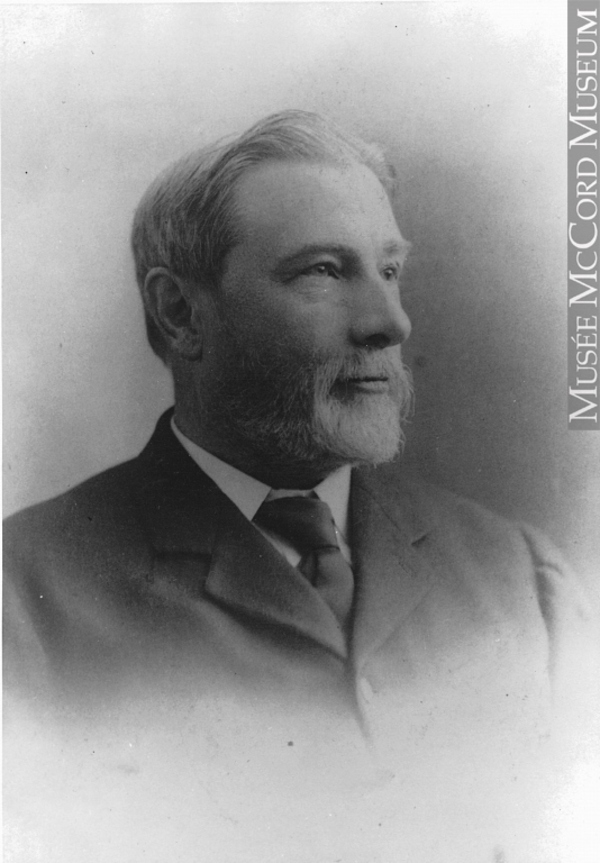
Source: Link
HENDERSON, ALEXANDER, merchant and photographer; b. 1831 in Scotland, son of Thomas Henderson; m. 4 Oct. 1855 Agnes Elder Robertson in Edinburgh, and they had nine children, five of whom survived to adulthood; d. 4 April 1913 in Montreal.
Alexander Henderson was the son of a successful nurseryman and seed merchant. His grandfather, Alexander Sr, the founder of the business, was the first chairman of the National Bank of Scotland and had been lord provost of Edinburgh. The family had extensive landholdings in keeping with its prominent social position and wealth. Besides its residence in Edinburgh, it owned Press estate, a 650-acre tract of farmland about 35 miles southeast of the city. The family spent much of its time at Press Castle, the large mansion on the northern extremity of the property. The farmland and other buildings were leased to a close relative. Alexander may have been born on the estate and at any rate spent much of his formative years in the region, in the tranquillity of the Ale Water valley, at the beach near Eyemouth, or along the fishing streams nearby.
Even after he entered Murcheston Academy on the outskirts of Edinburgh, Henderson returned to Press on weekends. He also spent some years at Rugby School in England. In 1849 he entered into a three-year apprenticeship to become an accountant. Although he never liked the prospect of a business career, he stuck to it to please his family. With his new bride, Henderson immigrated to Lower Canada in October 1855. They settled in Montreal, where from 1859 to 1863 Henderson was a commission merchant.
Henderson learned photography in Montreal about 1857 and quickly took it up as a serious amateur. His artistic and technical progress was rapid and in 1865 he published his first major collection of landscape photographs. Of limited circulation (only seven copies have been located), the publication is called Canadian views and studies by an amateur on the cover and Photographic views and studies of Canadian scenery on the title page. The contents of each copy vary significantly. The publication is important in evaluating his early work.
In 1866, perhaps encouraged by the reception of his book, he gave up his business to open a photographic studio, advertising himself as a portrait and landscape photographer. From about 1870 he dropped portraiture to specialize in landscape photography and other views. His numerous photographs of city life revealed in street scenes, buildings, and markets are alive with human activity, and although his favourite subject was landscape he usually composed his scenes around such human pursuits as tilling the soil, cutting ice on a river, or paddling a canoe down a woodland stream. A sufficient market existed for these types of scenes and others depicting the lumber trade, steamboats, railways, and waterfalls to enable a skilled photographer to make a living. There was little competing hobby or amateur photography before the late 1880s because of the costs, cumbersome equipment, and time-consuming techniques involved. Therefore, a photographic souvenir of a trip, a record of a favourite view, or a picture as a gift was usually bought from a professional photographer. Catering to this market, Henderson had stock photographs on display for mounting, framing, or inclusion in albums. He also published two small books of views of Montreal, one showing the city in summer, the other in winter.
Henderson travelled widely throughout Quebec and Ontario, documenting the major cities and resort areas of the two provinces and many of the villages in Quebec. He was especially fond of the wilderness and made many trips by birch-bark canoe to the Blanche, Rouge, du Lièvre, and other noted eastern rivers. He went on several occasions to the Maritimes and in 1872 cruised along the lower north shore of the St Lawrence River with John Thomas Molson and his family in Molson’s yacht, the Nooya. That same year, while in the lower St Lawrence River region, he took some photographs of the construction of the Intercolonial Railway. This undertaking led in 1875 to a commission from the railway to record the principal structures along the almost-completed line connecting Montreal to Halifax. Commissions from other railways followed. In 1876 he photographed bridges on the Quebec, Montreal, Ottawa and Occidental Railway between Montreal and Ottawa, from 1882 to 1884 he took pictures of bridges built by the Dominion Bridge Company Limited for the Canadian Pacific Railway, and in 1885 he went west along the CPR as far as Rogers Pass, B.C., where he portrayed the mountain scenery and the progress of construction.
In 1892 Henderson accepted a full-time position with the CPR as manager of a photographic department which he was to set up and administer. His duties included spending four months in the field each year. That summer he made his second trip west, photographing extensively along the railway line as far as Victoria. He continued in this post until 1897, when he retired completely from photography.
Henderson was a personal friend and colleague of William Notman*, the well-known photographer. Their children were about the same age and apparently played together, since Henderson photographed some of them tobogganing outside his studio. During his years as an amateur, he often bought his photographic supplies from Notman. The two men made a photographic excursion to Niagara Falls in 1860 and they cooperated on experiments with magnesium flares as a source of artificial light in 1865. They belonged to the same societies at times and were among the founding members of the Art Association of Montreal. The first meeting was held in Notman’s studio on 11 Jan. 1860 with Henderson as chairman. Later, they both joined the Young Men’s Christian Association and were involved in the Montreal Amateur Photographic Club. In spite of their friendship, their styles of landscapes and views were quite different. While Notman’s views were noted for their bold realism, often tending toward the abstract, Henderson for the first 20 years produced romantic, pastoral images, showing the strong influence of the British landscape tradition.
Henderson frequently exhibited his photographs in Montreal and abroad, in London, Edinburgh, Dublin, Paris, New York, and Philadelphia; he often received special mentions. He met with greater success in 1877 and 1878 in New York when he won first prizes in the exhibition held by E. and H. T. Anthony and Company for landscapes using the Lambertype carbon process. In 1878 he won second prize (a silver medal) at the universal exposition in Paris.
When Alexander Henderson died in 1913, his huge collection of glass negatives was stored in the basement of his house in Westmount. After the death of his unmarried daughter about 40 years later, his grandson Thomas Greenshields Henderson, the only surviving descendant, spent a day carrying the boxes of negatives to the alley for the garbage collectors. Henderson’s work is known today through several collections of prints, the largest being in the National Archives of Canada, Ottawa, and the Notman Photographic Archives in the McCord Museum of Canadian History, Montreal.
Church of Jesus Christ of Latter-day Saints, Geneal. Soc. (Salt Lake City, Utah), International geneal. index. McCord Museum of Canadian Hist. (Montreal), Notman Photographic Arch., Henderson family records. Louise Guay, “Alexander Henderson: Canadian landscape photographer,” Archivist (Ottawa), 14 (1987), no.5: 6–7; “Alexander Henderson, photographer,” Hist. of Photography (London), 13 (1989): 79–94. D. [R.] Reid, “Our own country Canada”: being an account of the national aspirations of the principal landscape artists in Montreal and Toronto, 1860–1890 (Ottawa, 1979). S. G. Triggs, “Alexander Henderson: nineteenth-century landscape photographer,” Archivaria (Ottawa), no.5 (winter 1977–78): 45–53.
Cite This Article
Stanley G. Triggs, “HENDERSON, ALEXANDER (1831-1913),” in Dictionary of Canadian Biography, vol. 14, University of Toronto/Université Laval, 2003–, accessed January 19, 2026, https://www.biographi.ca/en/bio/henderson_alexander_1831_1913_14E.html.
The citation above shows the format for footnotes and endnotes according to the Chicago manual of style (16th edition). Information to be used in other citation formats:
| Permalink: | https://www.biographi.ca/en/bio/henderson_alexander_1831_1913_14E.html |
| Author of Article: | Stanley G. Triggs |
| Title of Article: | HENDERSON, ALEXANDER (1831-1913) |
| Publication Name: | Dictionary of Canadian Biography, vol. 14 |
| Publisher: | University of Toronto/Université Laval |
| Year of publication: | 1998 |
| Year of revision: | 1998 |
| Access Date: | January 19, 2026 |


